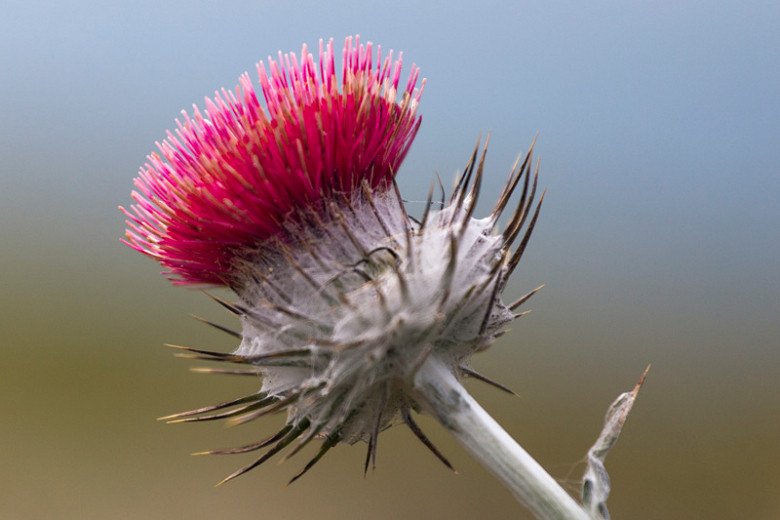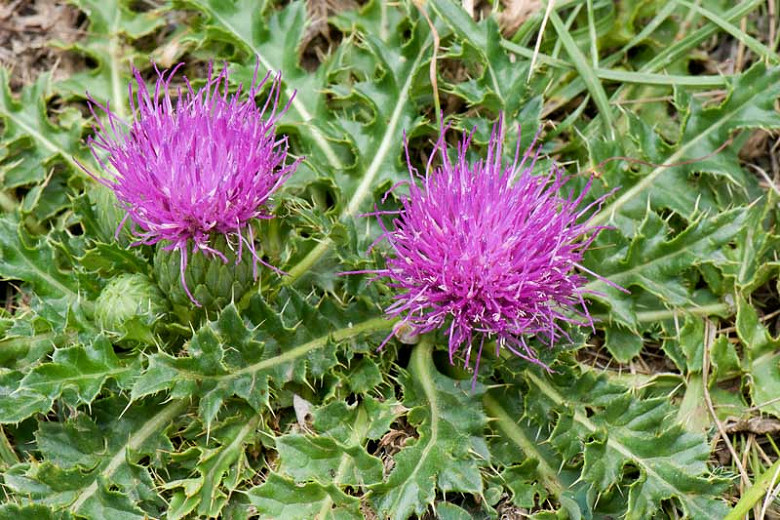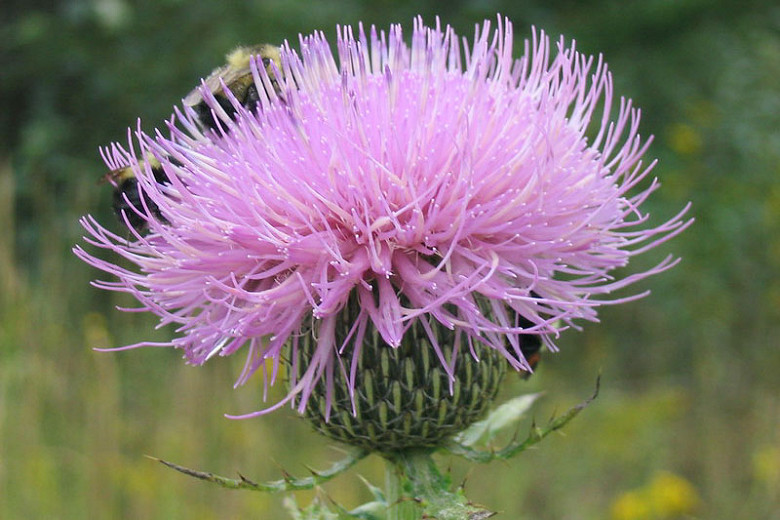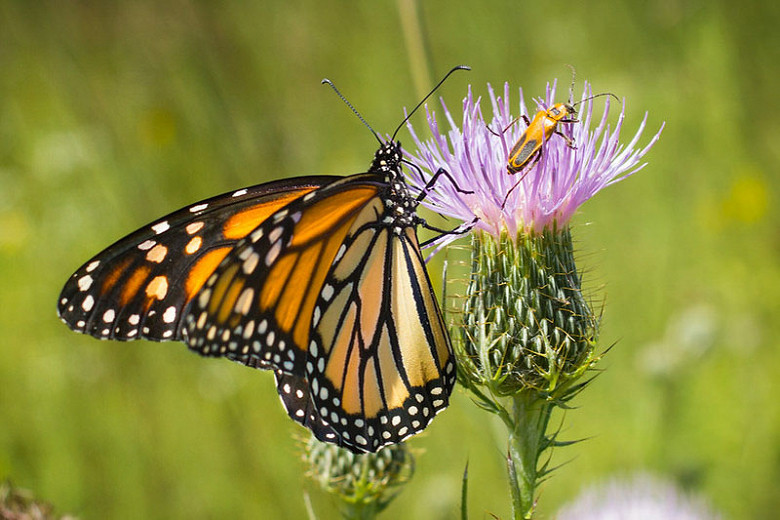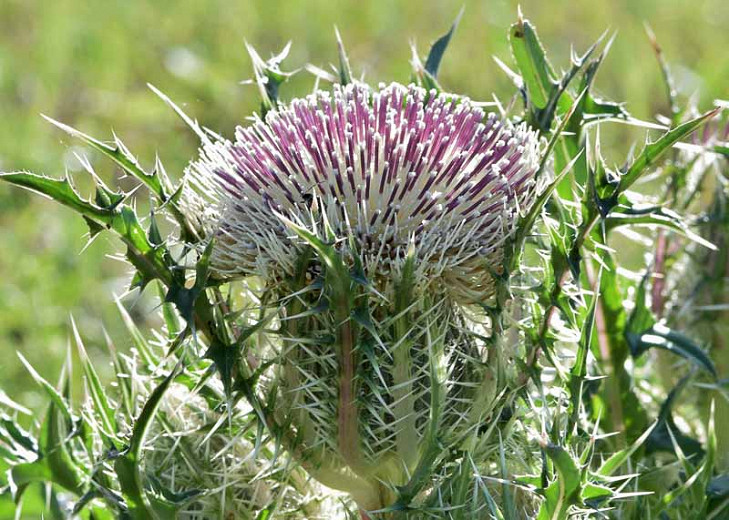Cirsium occidentale (Cobwebby Thistle)
Tall and stately, Cirsium occidentale (Cobwebby Thistle) is an utterly charming biennial or short-lived perennial producing a basal rosette in the first year and flowers in the second year. Its stout and upright stem may be unbranched or with several ascending lateral branches. All parts of the plant are covered with long, pale, silky hairs, which resemble cobwebs. The ovate leaves are pinnately lobed with triangular lobes and sharp prickles. They clasp the stem, often with prickly wings. In late winter to fall, the plant boasts rose-purple pincushion-like flower heads, up to 3 in. across (8 cm), packed with many disc flowers. They are held within spiny bracts, all laced with white, woolly webbing. Blooming over a long period, the blossoms produce copious pollen and nectar and are visited by numerous native bees and butterflies. The blossoms give way to seeds with long downy plumes that facilitate dispersal by the wind. Finches relish the seeds. Native to western North America, Cobwebby Thistle can be found in coastal strand, coastal sage scrub, chaparral, as well as forests and disturbed areas. It has a central taproot and is not weedy or invasive as non-native thistles.
- Grows up to 2-5 ft. tall (60-150 cm). Field Thistle will die after flowering, but will self-seed sparingly in the garden.
- Thrives in full sun to partial shade in dry to mesic, well-drained soils.
- Lovely in butterfly gardens, cottage gardens, naturalized areas and prairies and meadows.
- No serious pest or disease issues. The fierce prickles protect the plant from large grazers such as deer.
- Propagate by seed in late fall to early spring. Germination usually takes place within 2-8 weeks. Division in spring or autumn
- Native to California and Oregon.
Requirements
| Hardiness | 7 – 10 |
|---|---|
| Climate Zones | 1, 1A, 1B, 2, 2A, 2B, 3, 3A, 3B, 7, 14, 15, 16, 17, 18, 19, 20, 21, 22, 23, 24 |
| Plant Type | Perennials |
| Plant Family | Cirsium – Thistles |
| Exposure | Full Sun, Partial Sun |
| Season of Interest | Spring (Early,Mid,Late)Summer (Early,Mid,Late)FallWinter |
| Height | 2' – 5' (60cm – 150cm) |
| Water Needs | Low |
| Maintenance | Low |
| Soil Type | Loam, Sand |
| Soil pH | Acid, Alkaline, Neutral |
| Soil Drainage | Well-Drained |
| Characteristics | Cut Flowers, Showy |
| Native Plants | United States, California, Pacific Northwest, Oregon |
| Tolerance | Deer, Drought |
| Attracts | Bees, Butterflies, Hummingbirds |
| Garden Uses | Beds and Borders |
| Garden Styles | Informal and Cottage, Prairie and Meadow |

